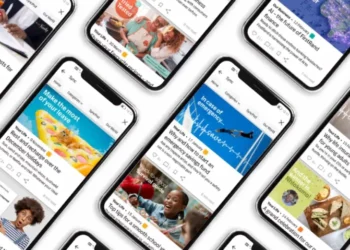Who could turn down an invitation to an event that promised “a candid look at advertising in 2018” and undertook “to unpack the most talked about challenges and opportunities” in the field today”?
It is, of course, a sign of my age that I was surprised that the invitation came from a Kantar Millward Brown. To have a research supplier reporting back on the Cannes Lions 2018, once the stronghold of creative agencies, is probably surprising only to someone who still has memories of struggling to stay awake while being subjected to hours of earnest monotone presentations of reams of statistics by market researchers.
Of course, things have evolved, and Kantar Millward Brown now describes itself as “the world’s leading experts in helping clients grow great brands”. The website assures us that “we are constantly analysing, understanding and interpreting the world around us. We make a meaningful impact on our clients’ businesses by using our insight and knowledge to help build brand value and drive marketing efficiency”.
The event comprised stimulating three speakers. Samu Makhathini, associate account director, Kantar Millward Brown, made a powerful case for the power of diversity in marketing and communication, while Natalie Botha, creative development director, Kantar Millward Brown provided us with a great creative wrap of Cannes, talking about “trust, tech and titanium. Finally, in Man vs Machine and The Quest for ROI, Daren Poole, global head of creative, insights division, Kantar explored whether AI can really help to drive creative ROI. To have a researcher – sorry, branding expert – stand up and unashamedly state that his job was not to lecture, but to entertain us, was a delight.
Poole said AI had been one of the buzz, or in his lexicon, “bingo” words at Cannes. He cited WARC’s Toolkit 2018, which showed that over 50% of surveyed marketers and agencies believed that AI was likely to be the emerging technology that would be the most important to the marketing business. This placed it ahead of chatbots/messenger apps, the internet of things and virtual/augmented reality.
Of course, the mention of AI does provoke fear in many, but Poole countered that with some stories of AI’s very real positive results. Netflix claims to have saved itself $1 billion in subscriber loss by using AI to predict viewer preferences. Now perhaps it should present AI with the challenge of producing a feasible long-term business model for it! Amazon is another company which has seen real results from the use of AI: A 20% reduction in operating costs and a 40% improvement in ROI.
Rise of racist robots
But Poole pointed out that AI has limitations. He referenced a headline in The Guardian ‘Rise of the racist robots – how AI is learning all our worst impulses’. It would seem that the old adage of “garbage in, garbage out” does indeed hold true: Feed machines data that reflects our prejudices and biases, and the poor things are condemned to perpetuate our worst discriminatory impulses.
He then turned to an amusing demonstration of artificial creativity. First, we were treated to an AI iteration of Harry Potter! Botnik, a self -described “community of writers, artists and developers using machines to create things on and off the internet”, trained a predictive keyboard by familiarising it with the extant JK Rowling fantasy oeuvre. Prompted by some guiding articles, it wrote a new chapter of the Harry Potter saga, enticingly entitled ‘Harry Potter and the Portrait of What Looked Like a Large Pile of Ash!’ A further taster suggests that JK Rowling should not feel threatened in the near future: “He saw Harry and immediately began to eat Hermione’s family. Ron’s Ron shirt was just as bad as Ron himself”.
Poole’s next example of AI’s fallibility were candy heart messages. Janelle Shane, a research scientist in optics, with a sideline in training neural networks, fed one all the actual messages she could find. “I Love You”, “Hot Stuff”, “Cutie Pie” and “Be Mine” are the sort of thing printed these pastel shaded hearts. When the neural network was tasked with producing a series of new ones, it generated slightly off-key, but arguably cute declarations such as “Love Bun”, “My Bear”, “Heart Me” and “You Are Babe”. But it also came up with the decidedly less romantic “Bog Love” and “Sweat Poo”, before creating in Shane’s description “some nice new four-letter words to use”.
Shane clearly revels in the unintentional humour produced the machine learning algorithm struggling to imitate human datasets. Another task she set it was to generate new paint colours and names, after feeding it thousands of Sherwin-Williams paint colors and names. We have all struggled to recall the evocative names of paint shades e.g. “Eye of the Storm” or “Evening Mist” we have encountered in inspirational brochures, so I must admit to feeling some sympathy for the poor thing. It turned out that the neural network had a penchant for brown, beige, and grey, talent for creating even more bewildering shade descriptors than its human counterparts: “Clardic Fug”, “Stummy Beige”, “Stanky Bean” and “Turdly”!
Brave new world
Using an online quiz, he showed that only 14% of the job of market research manager was susceptible to automation, whilst 28% of the functions of creative directors and brand managers are. Most of these functions related to routine administrative areas of the jobs, allowing Poole to conclude: “I think our jobs are safe (ish)”.
After this reassurance he added some sage advice about how marketers and communicators should be tackling this brave new world. Most importantly, start the job to be done, not the ad tech. It is easy to be beguiled by the new tech. The starting point needs to be to have a clear objective, meaningful insight into one’s consumer in order to generate a relevant idea. This idea, in turn should guide content, and deployment should follow.
Rather than talking, and thinking, about “digital” or “mobile first”, we need to place the brand first. He referenced some of the take-outs from the Kantar Millward Brown study “Make A Lasting Impression” such as “work with the brain, not against it.” His concluding slide left the audience with four key take-outs: use the 70:20:10 in allocating resource, define your objective first, without an anchoring idea there is no meaningful communication and while “purpose driven campaigns” are all the vogue, they only work if the purpose is authentic. Such authenticity is found in the overlap between brand purpose, insight, product advantage and brand advantage.
The event was as thought-provoking as it was entertaining: viva the evolution of researchers into brand growth experts!

Having spent some decades working in the media agencies, Britta Reid now relishes the opportunity to take an independent perspective on the South African media world, especially during this time of radical research transformation.














